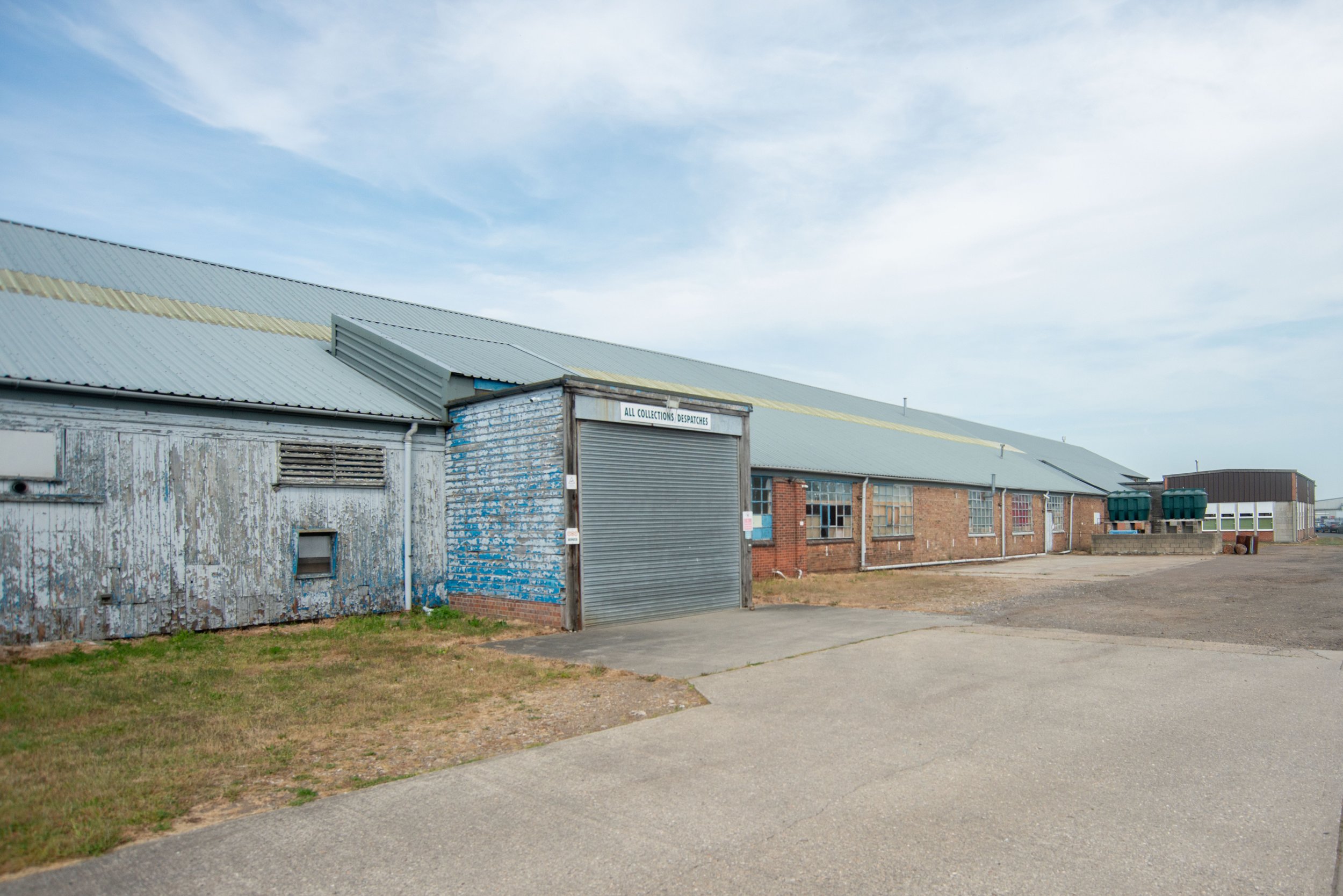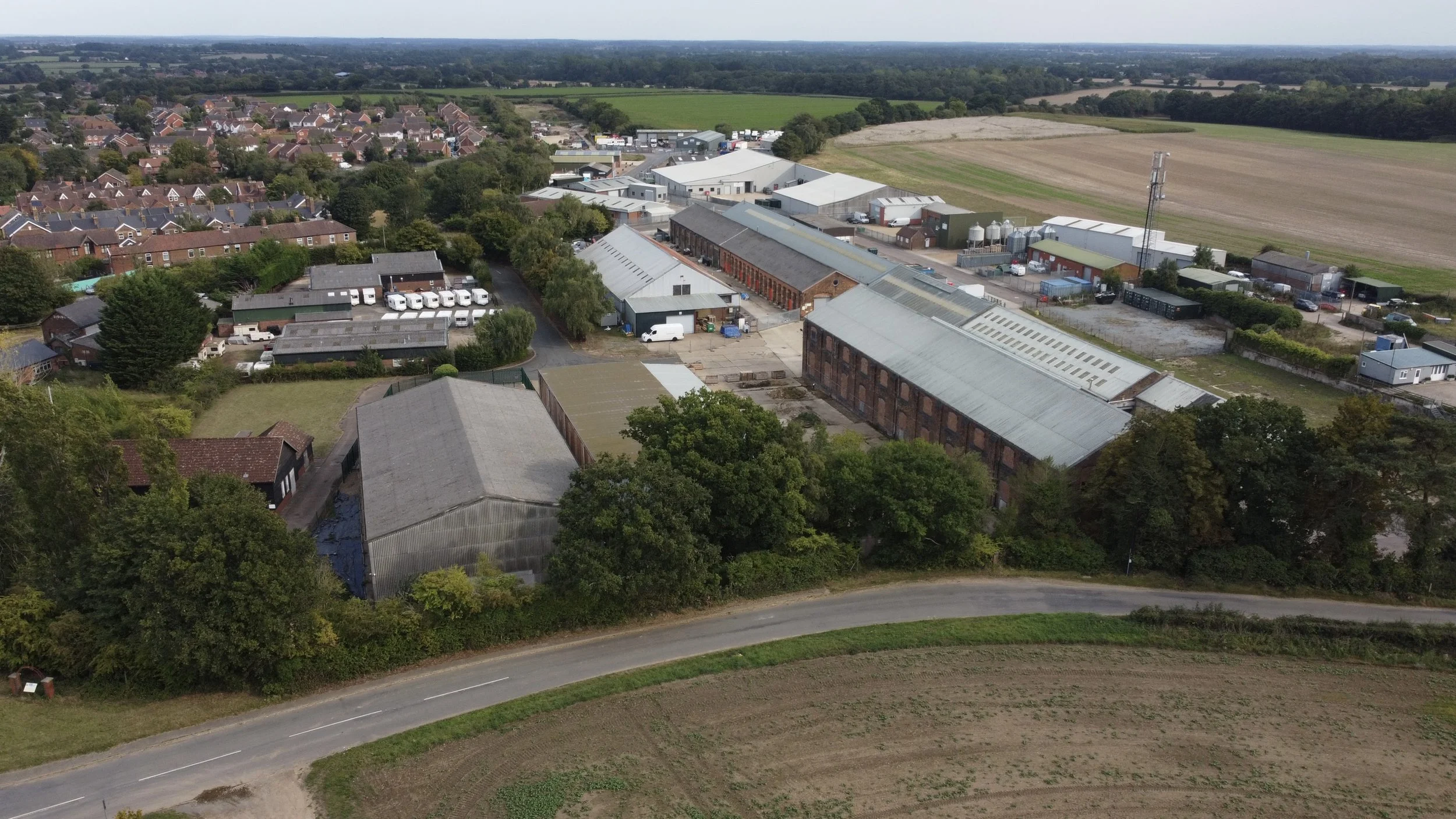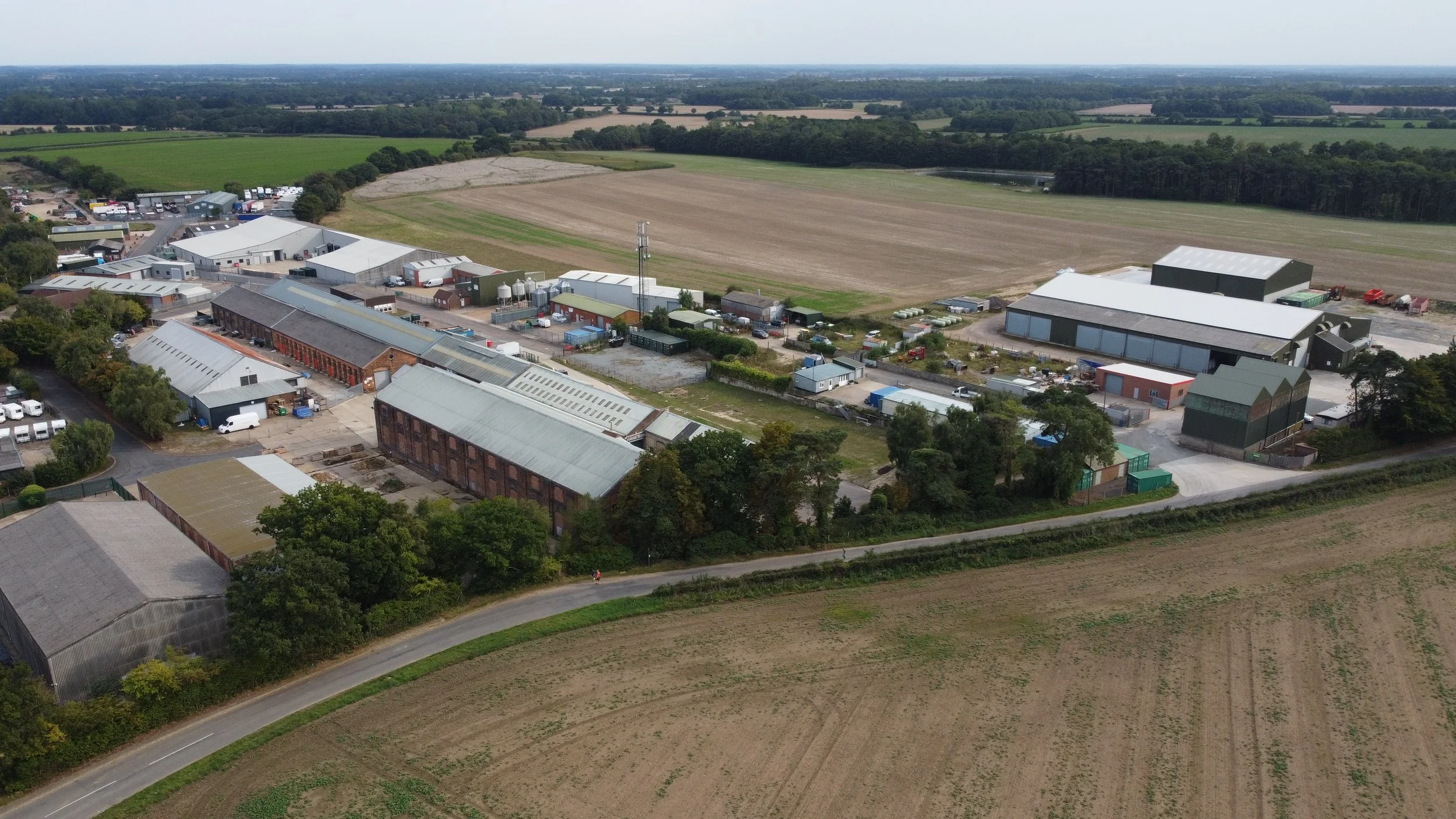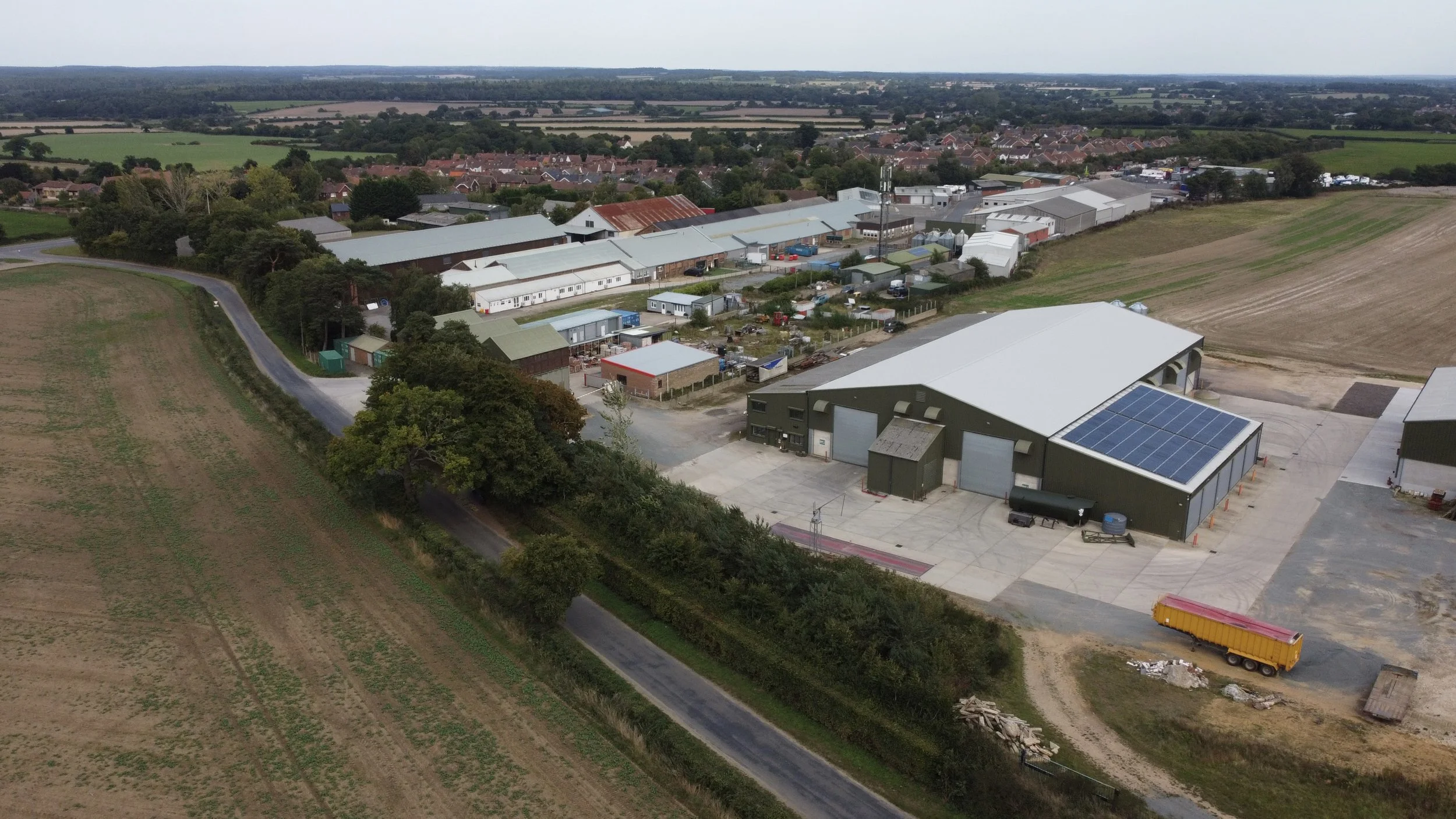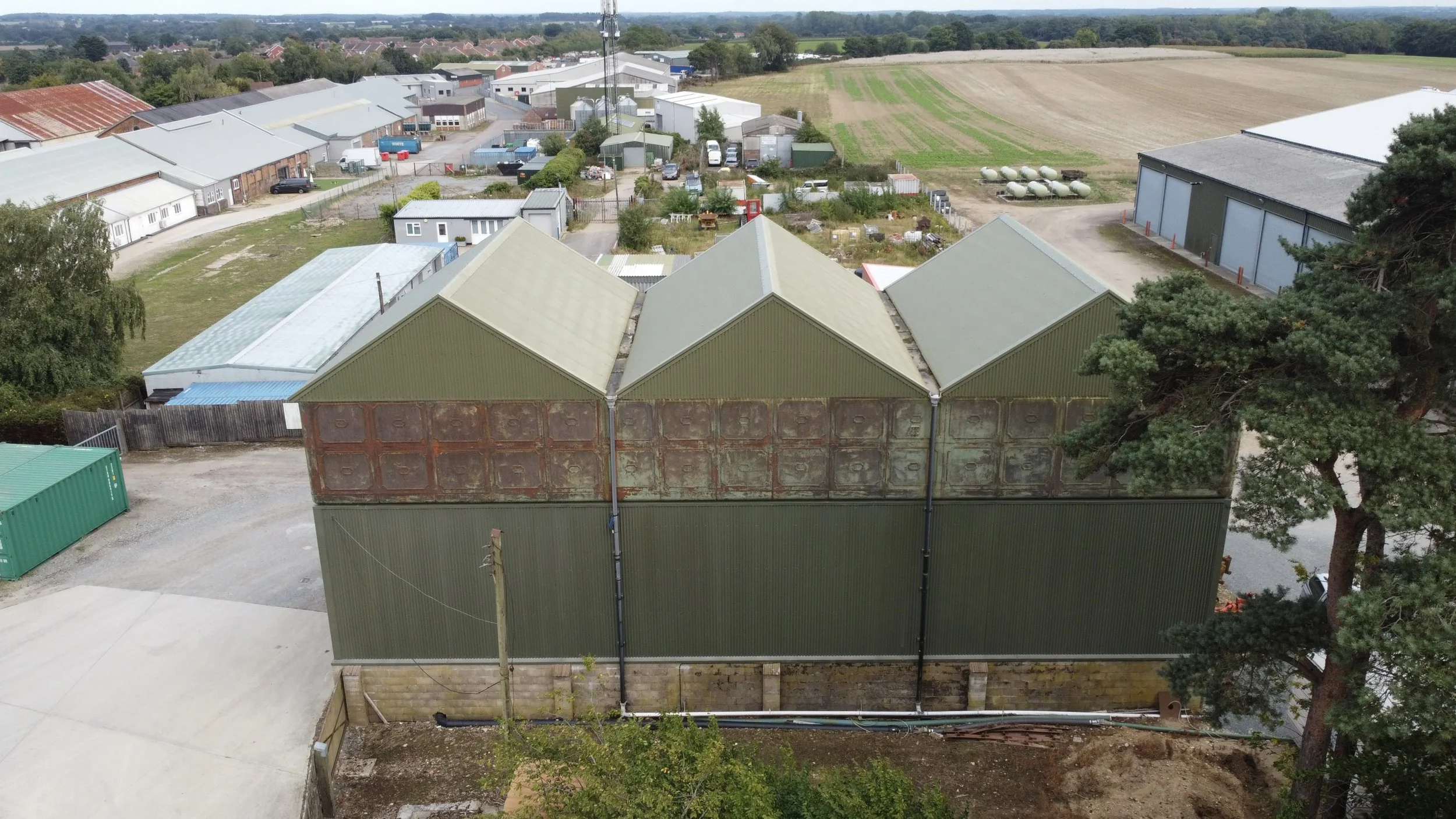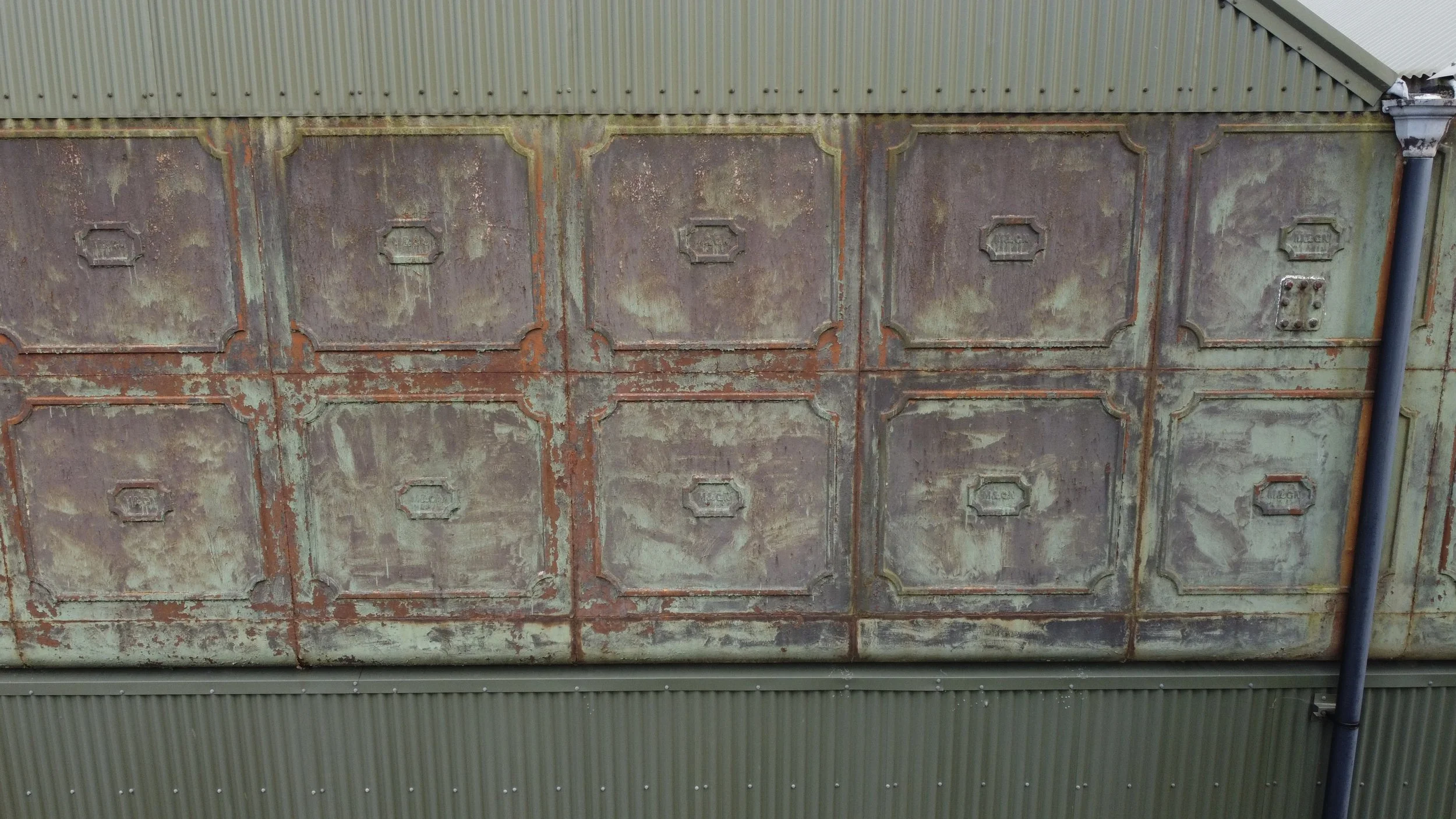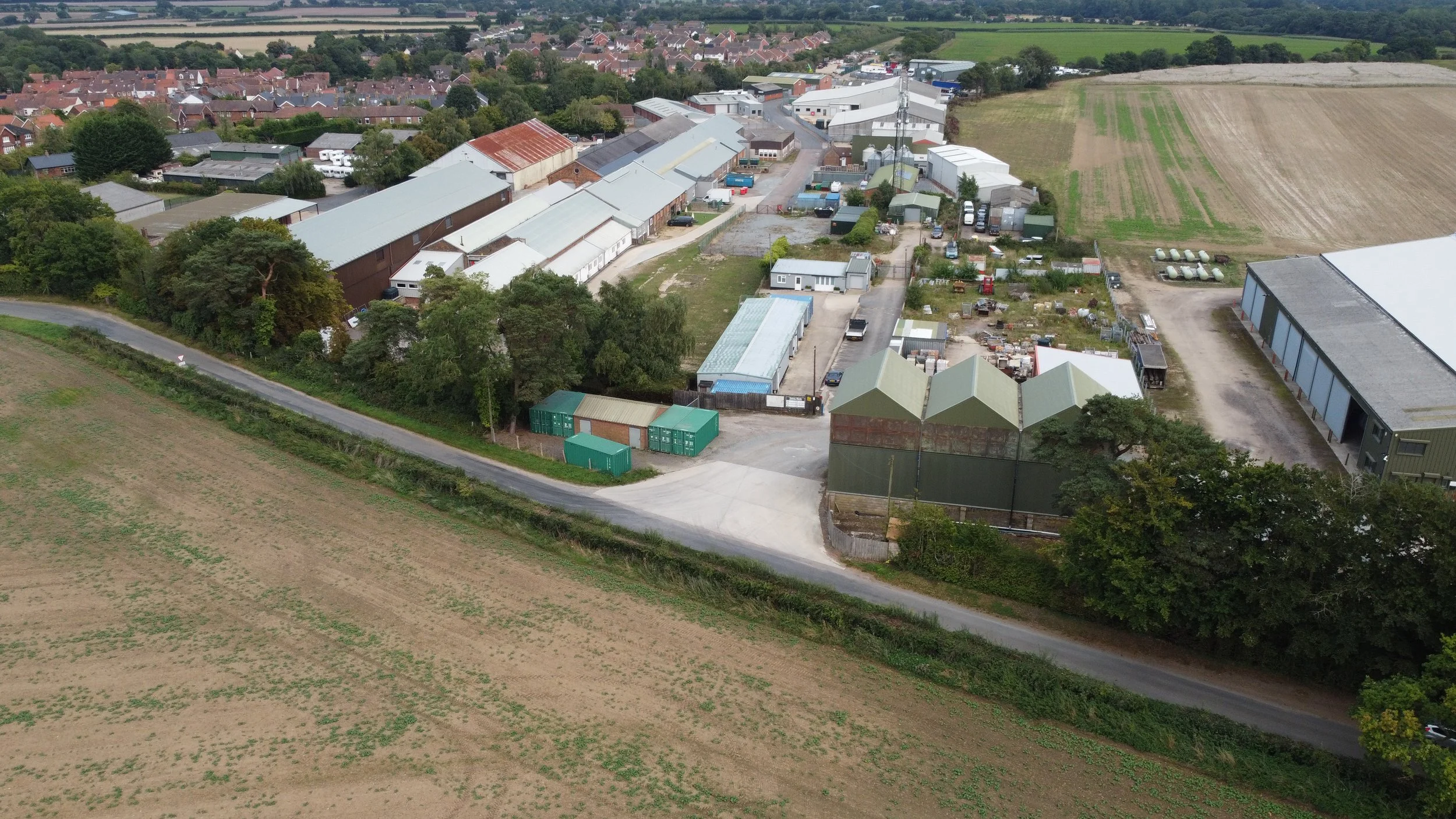
MELTON CONSTABLE RAILWAY WORKS
THE CREWE OF NORFOLK
Past & Present
Hello and welcome to the coverage of M&gn Melton Constable works buildings and memorials.
This report was initially compiled in the summer of 2020 and has been updated in the summer of 2023 and in September 2025 to include some aerial images.
Thank you for joining us on this journey.
The construction of Melton Constable station was made possible through the generous donation of land from Lord Hastings, who was later rewarded with a custom-made waiting room and a private platform. The station boasted a single island public platform that spanned 800 feet (240 m) and had through tracks on both sides. Visitors accessed the island platforms via a covered staircase that led from the road to the station. The station also offered several amenities, such as a refreshment room, waiting room, and toilet block. The platforms were sheltered by a canopy and two signal boxes named Melton East and West that were located at either end.
In 1883, The Works was founded by the Eastern & Midlands Railway, following the closure of the locomotive shops in Yarmouth and Fakenham. This move ensured that all significant repairs were now carried out in Melton Constable.
The station was established in 1882 and ceased operations in 1964. Prior to its closure, most of the M&GN had already shut down in 1959, leaving Melton Constable as the only terminus from Sheringham until its eventual closure in 1964.
In 1881, Melton Constable was a quaint village with only around 120 residents and 19 houses. However, a significant transformation occurred the following year when the railway was introduced. By 1911, the population of Melton Constable had surged to nearly 1,600 individuals, all thanks to the railway's arrival.
By 1911, Melton Constable had reached its peak. The village was established in the 1880s at the intersection of four railway lines, which connected Cromer, North Walsham, King's Lynn, Peterborough, Sutton Bridge, Norwich, and other areas in Norfolk to the Midlands and Lincolnshire. It was a new and bustling village built around the railway.
The M&GN network had two primary stations: Melton Constable and South Lynn. As South Lynn was the second station in Kings Lynn, South Lynn was connected to the Lynn Ely line through a shuttle line. South Lynn also boasted an expansive goods yard and was linked to Melton Constable via Fakenham.
A facility covering 14 acres (57,000 m2) was built on Norfolk Farmland. It consisted of an erecting shop, two long workshops, an iron foundry, a gasworks for the village, drawing offices, and housing for the railway workers. There was also a turntable and a wooden engine shed located at Melton Constable. However, the wooden engine shed was later replaced with a concrete one in 1951.
The M&gn was commonly referred to by a nickname: The Muddle & Go Nowhere.
The village of Melton Constable had a rural industrialised town appearance due to the location of the main workshops and factory of the Midland & Great Northern Joint Railway (M&GNJR). The workshops were often referred to as the "Crewe Works of Norfolk" and produced a total of 19 steam locomotives and various wagons during its time under M&GNJR ownership. The Melton Constable site provided maintenance services for numerous M&GN steam engines and dismantled older machines at a gas cutting works located within the engine works. The village also had a thriving concrete work that produced various railway items, including furniture, fence posts, signal posts, and supports.
Pre-fabricated station buildings were also manufactured at this Norfolk location.
There are still some concrete products that have managed to survive till today, such as the sign at West Runton station and the signal box at Cromer station and also the lamp posts at Sheringham station on the North Norfolk railway. The sign at Gedney is also said to have been made from Melton Constable concrete.
Melton Constable served as a military munitions shell production site during World War One, which made it vulnerable to German Zeppelin raids at night while the workers were still on duty and the engine works were brightly illuminated. As a temporary measure during the war, the maintenance of the railway engines was outsourced to nearby companies.
During World War One, it was unfortunate that several engine drivers and other personnel, including the son of William Marriott, lost their lives.
In World War Two, the workshops were smaller and not as useful as they were in the First World War. Much of the work had already been transferred to Stratford by then.
Following its acquisition by the London and North Eastern Railway in 1936, Melton Constable Station experienced a decline as the new owners shifted operations to their works in Stratford. Consequently, numerous staff members relocated to the new works, which were situated close to London. Additionally, the influx of other railway companies during this period made the M&GN less popular, resulting in decreased demand for its rural locations. Despite these challenges, the works facility in Melton Constable remained operational for small maintenance jobs, and in 1951, a new shed was constructed for this purpose. This smaller shed had the capacity to accommodate up to 12 locomotives.
Melton Constable passenger station closed down in 1964, five years after some sections of the M&GN that had already shut down in 1959.
The Present Day
The closure of the lines and cessation of passenger and goods services by British Railways had a detrimental effect on Melton Constable, leading to its gradual decline. Nowadays, the village is situated in the heart of a large agricultural region where alternative modes of transport, such as cars, HGVs, and buses, are widely used. Nevertheless, there are still inhabitants who recall the days of the railway, with some having family connections to the industry.
The population of Melton Constable is currently estimated to be around 500 individuals.
It is possible that several families residing in this area might not have chosen Norfolk as their home if not for the railway and works at Melton Constable.
It's unfortunate that the Melton Constable station no longer exists, as it was completely demolished and there is no evidence of the former intersection. A telephone exchange has since been constructed on a portion of the former station's site. Additionally, it's been reported that the turntable, which was part of the station, was also demolished in the 1970s.
Many of the buildings at Engine Works are still standing and are being utilized for private industrial purposes. The gasworks have been demolished, but the goods shed, which isn't directly connected to the works, has been converted into a cafe. While some buildings have been updated with metal roofs, the 1951 engine shed remains in use. Sadly, the chimneys have also been demolished, including one that was next to the engine shed, which was taken down in the 1990s.
Nonetheless, the Water Tower remains intact and has been given a new roof. It also benefits from a protection order, as do some parts of Melton Constable village, to preserve the railway heritage. Some sections of the Water Tower have been repaired and still bear the scars of damage sustained during World War.
As you arrive at Melton Constable, you'll find a bus stop with memorabilia from the village inside. The supports used for the original station platform canopy were repurposed for this bus stop. There's also a memorial for the entrance to the Railway Works, complete with a steel arch, and near the erecting shed and long shops, the stairs leading to the works are still standing.
Melton Constable Station, which was once a magnificent railway station, has been demolished for many years now and has been replaced by other structures. Unfortunately, there are no signs left of its existence. However, there is a possibility that the Norfolk Orbital Railway project may replace it in the future. This project aims to connect the Mid Norfolk Railway and the North Norfolk Railway through a new station that will be built at Melton Constable.
Melton Constable Maps
My Google Map Coverage from Melton Constable station and works
My Google Map Coverage of all the M&GNJR stations
Google Maps link
These maps date back to the early 1900s and were made available through the National Library of Scotland.
Melton Constable Station
Upon visiting Melton Constable in both 2020 and 2023, I was unable to uncover any evidence of the once-majestic train station. Regrettably, the station was demolished in the 1970s and has since been replaced by a telephone exchange. It was quite disheartening to witness the absence of this historical landmark.
In Melton Constable, there used to be a Long Island platform with tracks on either side that stretched 800 feet long. Signal boxes were located at both ends of the platform, bearing the names Melton East and Melton West. Lord Hastings also had his own private short platform adjacent to it. The platform was covered by a long canopy supported by metal spandrels bearing the initials "CNR", which referred to the failed Central Norfolk Railway scheme. Access to the platform was through a covered staircase that descended from a nearby road overbridge to a single-story station building that housed the booking office and refreshment room. At the eastern end of the platform, there was a single-story brick public waiting room and toilet block. The majority of M&GN ceased operations on February 28, 1959, leaving Melton Constable as the terminus of a branch from Sheringham until April 4, 1964, when passenger services were discontinued.
Melton Constable Station
Opened 19 January 1882
6 April 1964 Closed to passengers
28 December 1964 Closed to freight
Demolished 1971
Melton Constable Station, train and East Signalbox cc-by-sa/2.0 - © Ben Brooksbank - geograph.org.uk/p/2028242
Here's the entrance that passengers used at Melton Constable Station.
Credit Facebook_Photographer Unknown
CC-BY-SA-4.0 Geoffrey Skelsey-wikimedia commons
Old postcard Author"KINGSWAY" No. S 1359-Public Domain-Wikimedia Commons
Credit Facebook_Photographer Unknown
Credit Facebook_Photographer Unknown
Credit Facebook_Photographer Unknown
Credit Facebook_Photographer Unknown
Melton Constable Works
The Crewe of Norfolk
During my visit to Melton Constable, I observed that some parts of the old works had survived the demolition that took place in 1970. These buildings are still in remarkable condition and are currently utilized for storage and industrial purposes on a daily basis. I had the opportunity to visit twice, once in 2020 and again in 2023. It was evident that the works were the main source of employment in Melton Constable, surpassing even the large M&GN intersection located at the station
The erecting shed at Melton Constable
The Long Shops
Sourced from facebook group-Photographer unknown
Sourced from facebook group-Photographer unknown
Here, we can see Melton Constable's works photographed roughly in the same location as the photograph above. The image shows the works long after its closure and still being used as industrial units in 2023.
Here are some additional photographs regarding the Long Shops at Melton Constable.
The 1951 Engine Shed
In January of 1948, ownership of the Melton Constable works was transferred to British Railway. Three years later, a new engine shed was constructed on the same spot where the old wooden shed had been located. This new building had the capacity to accommodate up to 12 engines. Similar to other railway works sites, Melton Constable also utilized stationary boilers for the purpose of generating the steam required for machinery.
Credit Facebook Group Norfolk Orbital Railway -Photographer unknown
The Water Towers
The Melton Constable Water Towers were constructed in 1898 to provide water supply for the village. They were built on the outskirts of the railway works towards the South West of the village. Unfortunately, during the war, the towers were damaged in zeppelin raids. Interestingly, the company's name, M&GN, is printed on every panel of the tanks located on the water tower.
The Towers remain standing to this day and serve as storage facilities. They are currently in the process of being listed for protection. Additionally, the roof on the towers has been replaced to prolong the lifespan of the building.
The water towers at Melton Constable before the cladding was added to the sides.
I would like to express my gratitude to David Williams and Ashley Dace via Wikimedia for providing these two images.
M&GN Melton Constable Water Tower by Ashley Dace, CC BY-SA 2.0 <https://creativecommons.org/licenses/by-sa/2.0>, via Wikimedia Commons
This file is licensed under the Creative Commons Attribution-Share Alike 2.0 Generic license.
Attribution: M&GN Melton Constable Water Tower by Ashley Dace
The Workers Entrance
Upon arrival at the Railway Works in Melton Constable, workers would pass through a metal arch and descend a flight of stairs to clock in before proceeding to the foreman's office to receive their daily work assignments. A memorial has been erected outside Melton Constable in honour of the M&GN workers, featuring a metal arch spanning two new brick pillars. It is believed that this arch is the same one that the workers would have passed through in the past.
The Memorial Arch at Melton Constable.
The steps the workers would have taken to enter the works at Melton Constable.
The picture displayed here has already been featured in the erecting shed section of this webpage. It depicts the erecting shed, and towards the right, we can notice the entrance steps that the workers used to access the Melton Constable works. The foreman's offices would have been positioned to the right of the steps. However, when this photo was captured in 2023, there were no remnants of these offices, and they had been entirely demolished.
The Sidings
Part of the old sidings at Melton Constable is now used as a cafe.
Melton Constable aerial images
September 2025
Melton Constable Village
Melton Constable is a town renowned for its railway works and station, with a rich history dating back to the Domesday Book of 1086, where it was referred to as Maeltuna. The town we know today was established in the 19th century as a result of the railway's construction.
In Melton Constable, there are numerous houses, a workers' club, and a bus stop that utilizes two of the station supports.
The Railway institute
The village bus stop and street sign.
Remaining parts constructed at Melton Constable Concrete works
There are remaining railway parts that were constructed here at Melton Constable that still remain on the railway network to this day.
The signal box base at Cromer is one of the surviving parts made from Melton concrete.
At West Runton station, located between Cromer and Sheringham, the sign on the Bittern Line that connects Sheringham to Norwich remains from its creation at Melton Constable. This station is one of only two remaining from the M&GN era on the network railway network.
Additionally, two more stations can be found on the North Norfolk railway. Interestingly, the lamp posts in Sheringham are constructed with Melton concrete.
According to Greater Anglia, this sign on the Network Rail network may be the only one left that was produced at the Melton Constable works located in West Runton. It is believed to be one of the oldest signs still standing, having been installed on December 21, 1921.
Please click on the following link to read the article by Greater Anglia about the Railway Sign located at West Runton.
M&GN bridges
North Runton station was opened in September 1887, so it is unlikely that the bridge at this station was made from Melton Concrete. This is because the works at Melton were opened at a later date. However, this typical M&GN style bridge, and many others that I have photographed from the M&GN network while having maintenance, may have parts constructed at Melton Constable. Only history - hidden history - could tell us for sure about the stories of these bridges. Unfortunately, we may never know.
West Runton Bridge
1887-Still in use
Sheringham to Norwich via Cromer bittern Line.
Norwich City to Melton Constable
Lynn Fakenham Railway
Congham Bridge
The End
Thank you for visiting my page about the Works at Melton Constable on the M&GN Network in Norfolk.





















